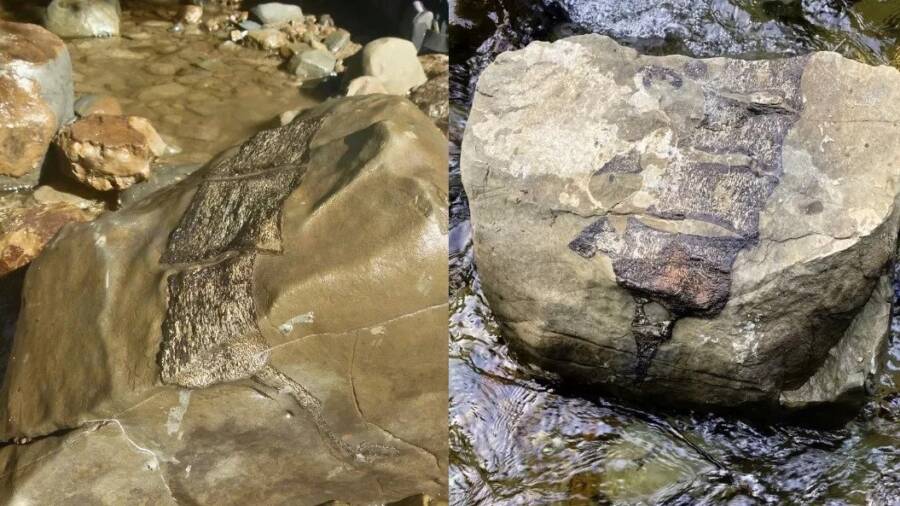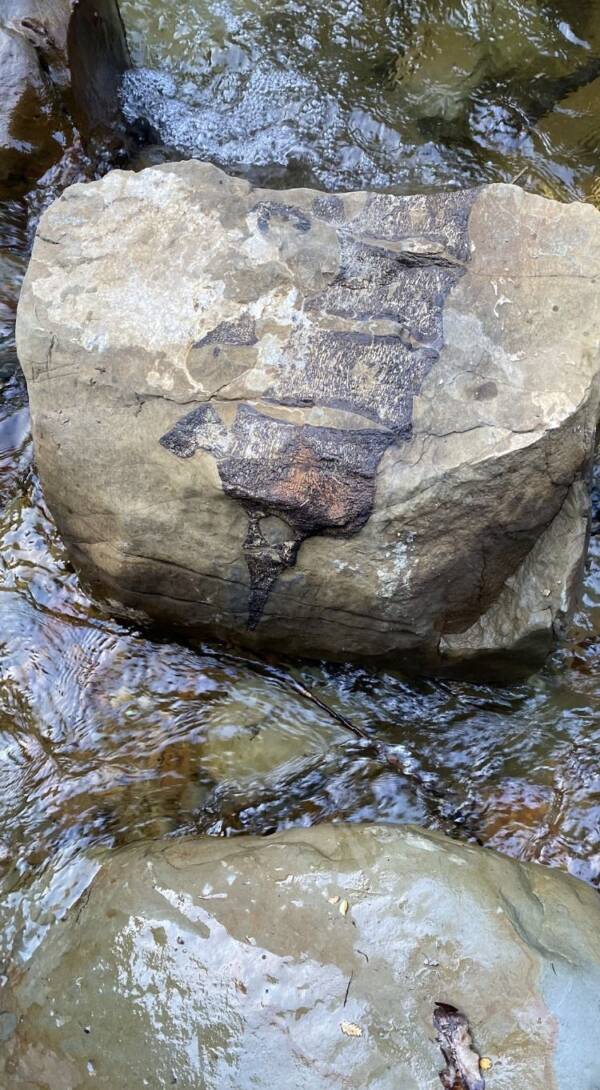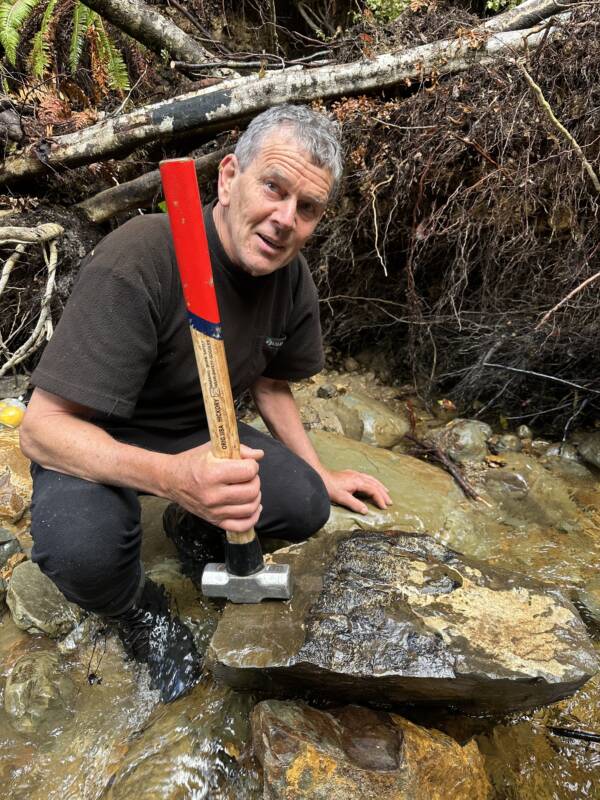The 80 million-year-old fossils, belonging to an Elasmosaurus and a mosasaur, were discovered in the Maungataniwha Native Forest on New Zealand's North Island.

GNS Science/Forest Lifeforce Restoration TrustThe vertebrae of two enormous marine reptiles were discovered after a cyclone tossed “boulders as if they were pebbles.”
Usually, it’s paleontologists who dig up fossils, often after years of careful study. But in New Zealand, a deadly cyclone managed to churn up rocks in the country’s Maungataniwha Native Forest over just a few days, exposing jaw-dropping fossils of enormous sea creatures that lived 80 million years ago.
According to GNS Science, the fossils were discovered by staff and volunteers from the Forest Lifeforce Restoration Trust. They were at the site to assess storm damage from Cyclone Gabrielle, a deadly storm that left 11 dead in February. To their surprise and delight, they stumbled across two fossil vertebrae belonging to two giant, extinct marine reptiles.
“Judging from what we found in just one morning, Gabrielle will contribute hugely to our collective knowledge about the creatures that called this place home in the depths of pre-history,” Pete Shaw, the forest manager of the Forest Lifeforce Restoration Trust, raved according to GNS Science.
Live Science reports that the vertebrae belonged to two distinct marine reptiles. The first appears to be from an Elasmosaurus, which were creatures with long necks that could grow up to 45 feet long. The second seems to belong to a mosasaur, an apex ocean predator with double-hinged jaws that allowed them to swallow their prey whole.
“Each new fossil find is like a page out of that story book and it is great to have knowledgeable and skilled people like Pete Shaw and his colleagues making these new discoveries,” National Paleontological Collection manager Marianna Terezow, who identified the two fossils, told GNS Science.

GNS Science/Forest Lifeforce Restoration Trust An imprint of one of the two fossils on a rock. Both marine reptiles lived some 80 million years ago and grew to an impressive size.
As Shaw noted, it’s thanks to the incredible destruction of Cyclone Gabrielle that these awe-inspiring fossil discoveries were made.
“It’s like a giant has walked down the stream-bed, kicking at rocks and boulders as if they were pebbles and turning everything over as he goes,” he said of the storm’s aftermath.
But the Maungataniwha Native Forest has yielded incredible fossil finds before. In 1975, New Zealand paleontologist Joan Wiffen discovered New Zealand’s first dinosaur fossils at the same site. Since then, other remarkable fossils from the Cretaceous period (145 million to 66 million years ago) have also been found.
“If any one place is the epicentre of New Zealand palaeontology then Maungataniwha, and particularly the Mangahouanga Stream, is probably it,” Shaw noted. That said, the storm churned up more than anyone had ever found in a single outing at the site, according to GNS Science.

GNS Science/Forest Lifeforce Restoration Trust Pete Shaw, an experienced fossil hunter, with one of the two fossils that Cyclone Gabrielle unearthed in February 2023.
The most recent finds have certainly inspired hope among staff and volunteers from the Forest Lifeforce Restoration Trust, including Shaw and Terezow, that more incredible fossil discoveries lurk just beneath the surface at the Maungataniwha Native Forest.
“The aptly named Maungataniwha sandstone, which is the main rock unit in the area, still has many interesting stories to tell,” Terezow said.
Maybe next time, it won’t take a deadly cyclone to reveal them.
After reading about the enormous 80 million-year-old marine fossils discovered in New Zealand thanks to the deadly Cyclone Gabrielle, learn about the Haast’s Eagle, New Zealand’s “lost giant” that went extinct 600 years ago. Then, discover more of Earth’s most astonishing prehistoric animals.





